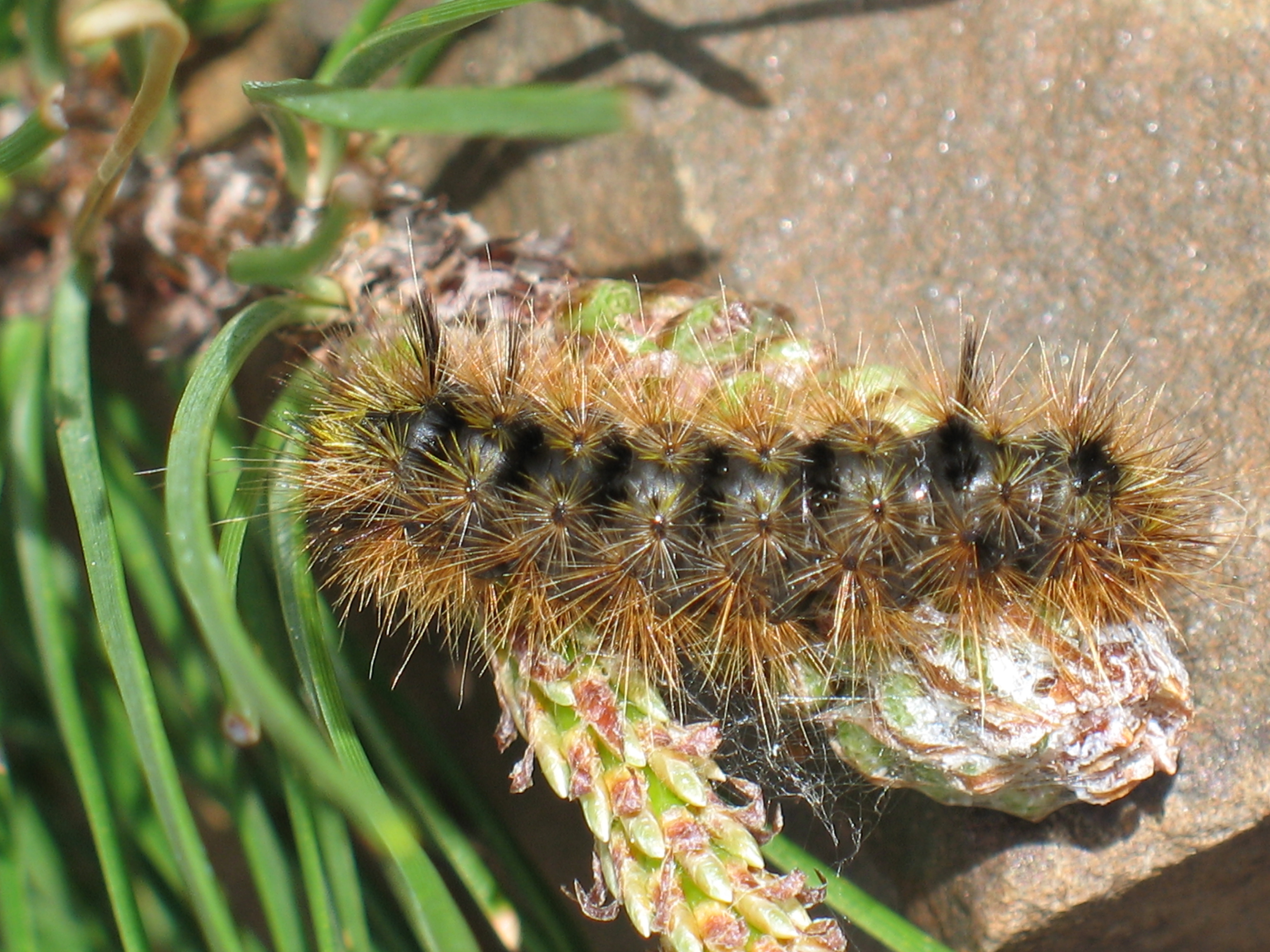Silver Spotted Tiger Moth (Lophocampa argentata) on Apr 13, 2010
Submitter does not have a specimen
Description of specimen
Pine Processionary Caterpillar
Images and information at this URL:
http://www.wildsideholidays.com/natural/insects-and-creepy-crawlies/99-moths/319-the-pine-processionary-caterpillar-and-its-life-cycle.html


Any help would be appreciated. Our contact information is for Portland/Tigard.
Thanks, Steve
Reporter
April 13, 2010, 9:24 a.m.
Lisa DeBruyckere
April 13, 2010, 10:01 a.m.
A photo would be valuable. Specimens in alcohol would be better. Many species of caterpillars are superficially similar to one another. This report almost certainly concerns a native species, the silver-spotted tiger moth, Lophocampa argentata. The larvae feed on many conifers, including pines, sometimes causing substantial defoliation to individual trees. Rarely does this damage extend throughout a stand. The larvae overwinter, so they are large and actively feeding at this time. They make loose webs of silk on the branches they are feeding on. The best treatment is to destroy infested branches or, if a tree is heavily infested, spraying with acephate-containing pesticides or Bacillus thuringiensis (Bt). The hairs of the caterpillars can be irritating (albeit not to the same degree as pine processionary caterpillars, which are not found in North America anyway), so minimizing exposure to webbing and caterpillars is prudent. I've received many reports of this insect this spring.
Lisa DeBruyckere
April 14, 2010, 1:36 a.m.
Thanks again for your help and assistance. Steve
Reporter
April 27, 2010, 3:32 a.m.
"I just reviewed the caterpillar photo. It is a perfect match for the larva of the silver spotted tiger moth. The control measures I recommended earlier would be appropriate for this insect. James LaBonte"
Thanks again for your report! Lisa DeBruyckere, Oregon Invasive Species Council Coordinator
Lisa DeBruyckere
April 28, 2010, 6:40 a.m.